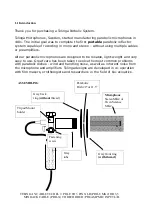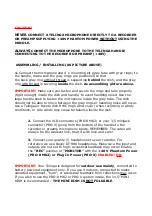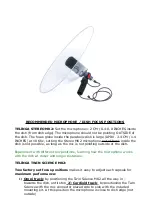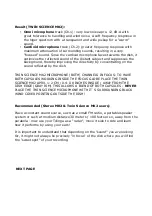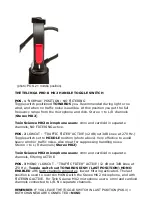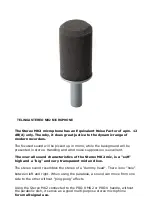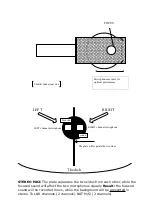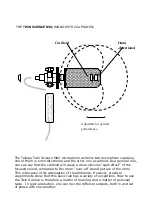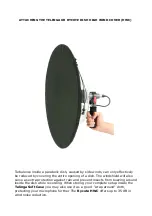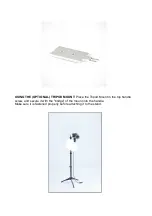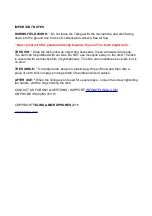
Result (TWIN SCIENCE MK2):
•
Omni microphone
track (Ch.1): very low noise aprx. 12 dB-A with
great tolerance to handling and wind noise. A soft frequency response in
the higer spectrum with a transparent and wide pickup for a "warm"
sound.
•
Cardioid
microphone
track (Ch.2): greater frequency response with
maximum attenuation of surrounding sounds, resulting in a very
"focused" sound. Since the cardioid microphone faces towards the dish, it
optimizes the reflected sound of the distant subject and suppresses the
background, thereby improving the directivity by concentrating on the
sound reflected by the dish.
TWIN SCIENCE MK2 MICROPHONE (BOTH) CHANNELS IN FOCUS: TO HAVE
BOTH CAPSULES WORKING INSIDE THE FOCUS GLOBE PLACE THE TWIN
SCIENCE MK2 APRX. 1-2 CM / 0.4-0.8 INCHES INSIDE / AWAY FROM THE
DISH EDGE (GRAY RIM) THIS ALLOWS A BLEND OF BOTH CAPSULES -
NEVER
PLACE THE TWIN SCIENCE MICROPHONE WITH IT`S SURROUNDING BLACK
WIND COVER POINTING OUTSIDE THE DISH!
Recommended (Stereo MK2 & Twin Science MK2 users)
Place a constant sound source,
such as a small FM-rad
io, a portable speaker
system or such at medium distance 30 meters / 100 feets or so, away from the
parabola - now use your Telinga as a "radar", move it side to side and learn
how it performs by using your ears!
It is important to understand that depending on the ”s
ound” you are looking
for
, it might not always be precisely "in focus" of the dish where you will find
the "sweet spot" of your recording.
NEXT PAGE


